Weaning is the process of introducing your baby to solid foods. It usually begins with the first taste of food and ends with the last meal of breastmilk/formula.
Weaning your little one is no small feat and should be celebrated! It simply means you’ve not only birthed a full human but you’ve also nursed (whether EBF/FF/BFF), nurtured and cared for this little human for 6 solid months!
This is a good time to clap your hands and pat yourself on the back… You’ve done well! Most people start weaning their babies at 6 months while others begin earlier (4 months) and some others, much later.
Signs to look out for before you start weaning your baby
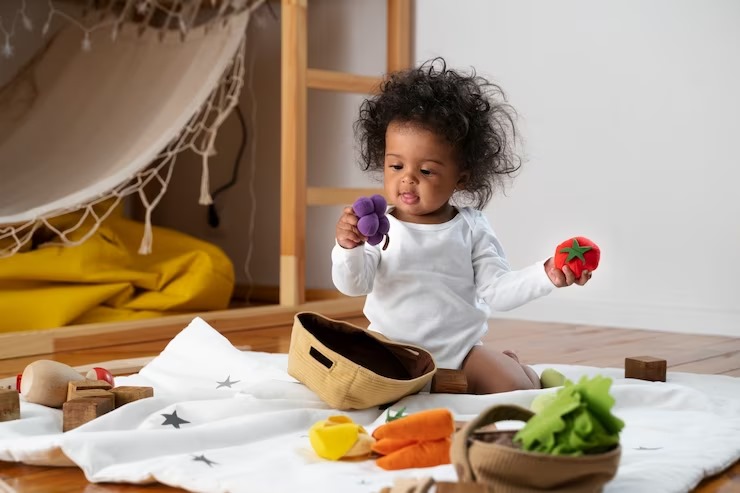
There is no one-size-fits-all approach to weaning, although it has different stages. There are some specific signs to look out for before weaning your baby, some of them include: your baby holding its head up without assistance, indicating interest in solid foods at family mealtimes, sitting up well (alone) and picking up food items and putting in their mouth.
There are tons of homemade recipes you can try while weaning your little one(s). My all-time favourites are mashed fruits/veggies and purees.
Purees
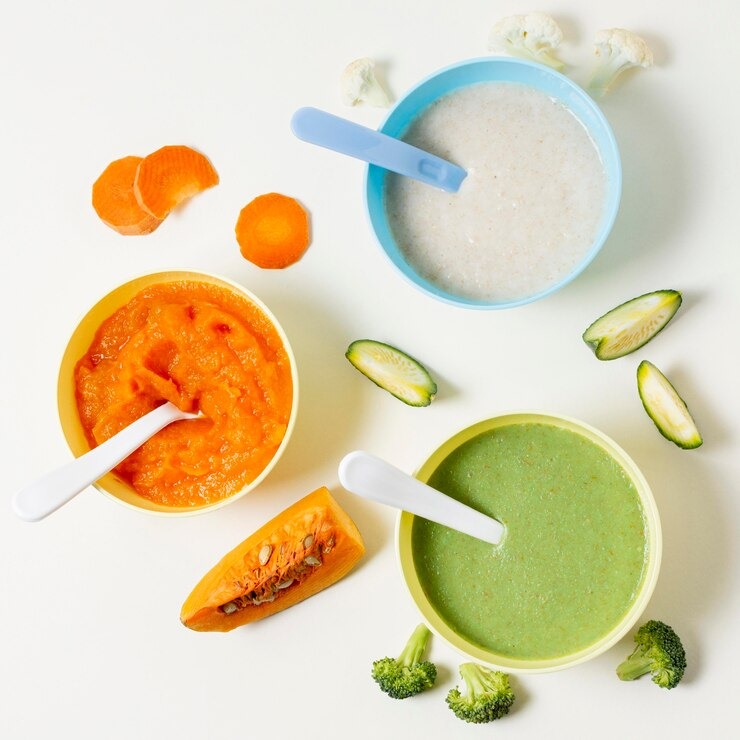
Purees are a great way to introduce various solids, fruits and vegetables to your babies. They are almost like smoothies but there are a few differences. They are rich in nutrients and vitamins which your little one needs for proper growth and development. They are also very good for bowel movements.
The best part of purees when it comes to weaning is that you can make a puree out of almost anything you want to introduce to your babies. Most purees are named after the major ingredient (fruit/veggies) that they are made from. There are various types of purees. Here are some of my favourites:
Apple Purees
As the name implies, this puree is made from apples.
Get 1 medium-sized apple, rinse it properly and peel off the back. Then chop into small sizes and boil (or steam) for about 5 minutes. Once the apples are fork-soft, pour into a sterile blender, add some breast milk (or formula/water) and grind till you have a smooth consistency.
Pour into a clean feeding bowl, serve your little one and watch them enjoy this delicacy…lol. Do I need to mention the nutritional benefits of apples for your little one? You can check them out here.
Carrot Purees
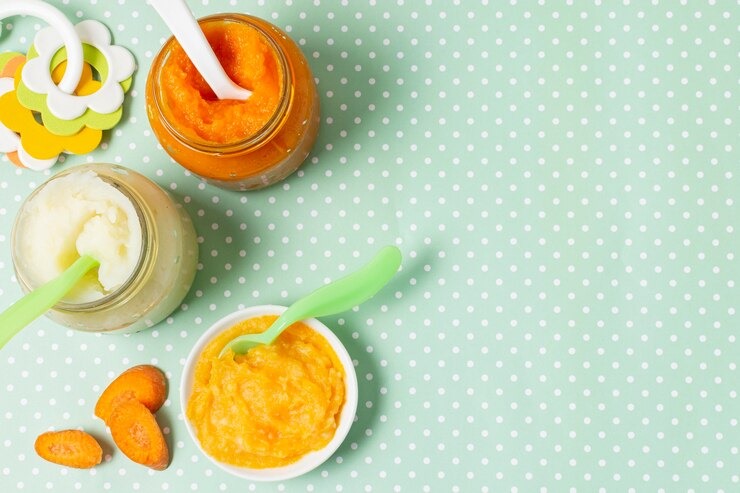
These are made from carrots. Just like the apples, you must wash the carrots properly (maybe scrape the back off lightly), then cut into bits and steam for a few minutes until it is fork-soft, then pour into a sterile blender, add some breast milk (or formula/water) and blend until you have a smooth paste. It doesn’t need any sweetener; your little one would love it.
Carrots are a great source of Vitamin A which is essential for eye health, it is also good for their skin, liver and hair.
Yoghurts
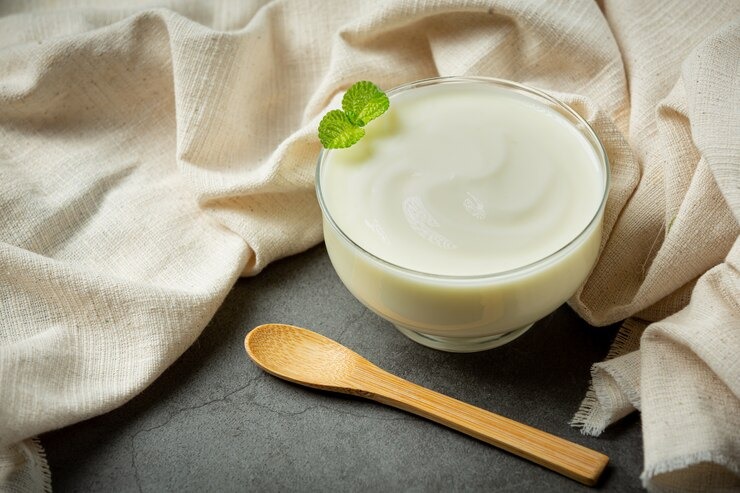
Yoghurts are a great way to introduce your little one to dairy products. They’re a great source of bone-friendly nutrients such as proteins, calcium, phosphorus and many more. They are also a good base for most fruit purees for much older babies.
When serving this to your little ones, ensure to go for the unsweetened Greek yoghurts. If you must sweeten it, please add only homemade date syrup. They are best served cold for teething babies.
Plantain Purees
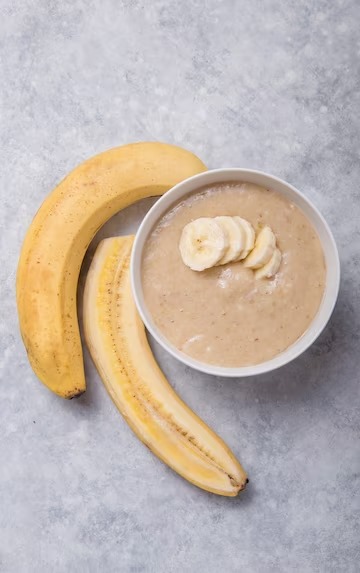
Plantain purees are packed with B vitamins, folates, magnesium, potassium and many others. It helps them develop a strong immune system, absorb iron, turn food into energy and grow their cells and tissue. There are various ways to prepare plantain purees but for starters, try to keep it at just plantain.
Pick out very ripe plantains and wash them thoroughly, peel the back off and cut into small sizes, then steam/boil it and once it is fork-soft, pour into a clean blender and add some breast milk/formula/water and blend till you achieve a consistency you’re comfortable with for your little one and serve this yummy goodness.
P.S – it is very sweet. So don’t be surprised if your little one(s) starts crying as soon as you stop feeding them.
Mashed Beans
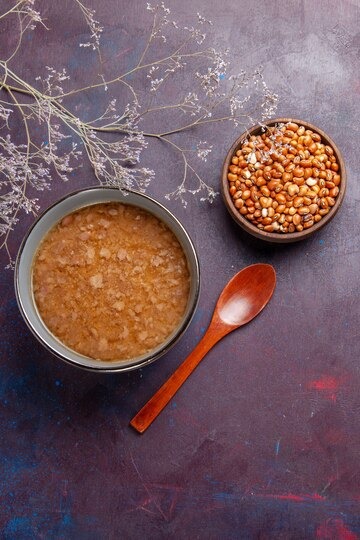
Beans are a great source of complex carbohydrates, which are good for your baby’s developing brain. Soak a small amount of beans in water and peel off the back, boil in water till it is very soft. Mash with a spatula or a blender. Please do not add any seasoning (salt, maggi, etc), if your baby isn’t allergic to seafood, you can include some fish/crayfish while boiling the beans. Serve and discover the foodie in your baby.
Mashed Sweet Potatoes
Sweet Potatoes are great antioxidants. They help protect babies’ cells against damage. They are also a source of vitamin A, which your little one needs for proper development of their skin, eyesight and immune system.
Wash thoroughly and peel off the back of the sweet potatoes. Cut into bits and boil without seasoning. Once it is fork-soft, pour into a strainer to take out the water and then pour into a clean bowl and mash using a fork or spatula. Add some breast milk/formula to liquefy until you achieve the desired consistency.
Mashed Bananas
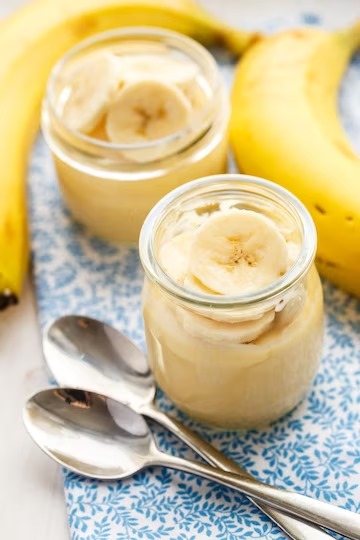
Trust me when I say I’m yet to meet a baby that doesn’t love mashed bananas. It’s almost as if they are aware of the truckloads of goodness embedded in bananas.
Bananas are packed with nutrients that support the nervous system, skin health, iron absorption, brain development and blood pressure. And what’s more? They’re very easy to prepare, so you should love it too.
Wash off the bananas in water and salt, to avoid the transference of germs/bacteria from the back. Peel off the back and cut the banana into smaller bits and mash in a clean bowl. Serve as it is or mix with breast milk/formula till you’re comfortable with the result. Yum!
It is important to note that when introducing fruits/vegetable purees to your baby (especially those between 4-6 months), you should go at it one fruit/veggie at a time. Unlike smoothies, you shouldn’t blend a lot of fruits at once.
This will help you identify your baby’s reaction to each food item and in case of an allergy, you can easily cut out that item from their diet. As your baby gets older and more accustomed to these foods, you can now combine fruits and vegetables to make purees, knowing what works for your baby and what doesn’t.
Fruits/Veggies must be boiled/steamed, this helps the puree have a finer consistency, it also takes care of the fear of choking on particles of the fruit/veggie that might have escaped the blender’s blade. It also prevents tummy troubles and bloating.
For more interesting insights on weaning and parenting tips, join our parenting community on Fusion.






5,810 Responses
п»їlegitimate online pharmacies india Best Indian pharmacy top 10 online pharmacy in india
pharmacies in mexico that ship to usa mexico pharmacy cheap mexico pharmacies prescription drugs
mexican pharmacy without prescription http://mexicanpharm24.cheap/# mexico drug stores pharmacies
http://pharm24.pro/# medicines for ed
best ed pills online
top 10 pharmacies in india Indian pharmacy worldwide delivery indian pharmacies safe
mexican online pharmacies prescription drugs mexico pharmacy mexican pharmaceuticals online
buying from online mexican pharmacy: Legit online Mexican pharmacy – buying prescription drugs in mexico online
buying from online mexican pharmacy: mexico pharmacy – medication from mexico pharmacy
top 10 pharmacies in india Order medicine from India to USA Online medicine order
ed pharmacy https://indianpharm24.pro/# india online pharmacy
https://mexicanpharm24.cheap/# buying from online mexican pharmacy
ed pumps
online shopping pharmacy india medicines from India mail order pharmacy india
india pharmacy: indian pharm 24 – Online medicine order
buying prescription drugs in mexico Mexican pharmacy ship US medicine in mexico pharmacies
purple pharmacy mexico price list: mexico pharmacy – buying prescription drugs in mexico online
buying prescription drugs in mexico online: mexico pharmacy – buying prescription drugs in mexico online
best pill for ed http://pharm24.pro/# hims ed pills
https://indianpharm24.pro/# Online medicine order
drugs for ed
medication drugs cheap drugs buy prescription drugs without doctor
mexican online pharmacies prescription drugs Mexican pharmacy ship US mexican drugstore online
https://pharm24.pro/# buy prescription drugs from canada cheap
online prescription for ed meds
buying prescription drugs in mexico online: mexican pharm 24 – purple pharmacy mexico price list
ed meds online without prescription or membership cheap prescription drugs best pharmacy online
buy medications online: cheap pharmacy online – men ed
mexican pharmaceuticals online: mexican drugs – buying from online mexican pharmacy
best ed drugs http://pharm24.pro/# impotance
mexico drug stores pharmacies Mexican pharmacy ship US mexican online pharmacies prescription drugs
natural ed cures cheap meds cheap erectile dysfunction pills
medicine in mexico pharmacies: mexico pharmacy cheap – mexico drug stores pharmacies
http://pharm24.pro/# comfortis for dogs without vet prescription
new ed drugs
best online pharmacies in mexico mexico pharmacy mexican online pharmacies prescription drugs
mexican mail order pharmacies: Legit online Mexican pharmacy – medication from mexico pharmacy
erectile dysfunction pills https://indianpharm24.pro/# cheapest online pharmacy india
canada ed drugs: cheap prescription drugs – buy ed drugs online
https://pharm24.pro/# prescription drugs online without
best ed medicine
https://mexicanpharm24.cheap/# mexican pharmaceuticals online
cheap pills online
ed treatments that really work http://pharm24.pro/# treatment of ed
ed meds online without prescription or membership: cheap pharmacy – over the counter ed remedies
https://pharm24.pro/# canadian pharmacy
erection pills
https://indianpharm24.pro/# best india pharmacy
real cialis without a doctor’s prescription
reputable indian online pharmacy: India pharmacy international – indian pharmacy
ed treatment drugs: cheap drugs – best ed supplements
canadian online drugstore http://mexicanpharm24.cheap/# buying from online mexican pharmacy
buy prescription drugs from india: Best online Indian pharmacy – top online pharmacy india
pharmacies in mexico that ship to usa: Legit online Mexican pharmacy – buying from online mexican pharmacy
ultrabet guncel ultrabet tr online ultrabet guncel
deneme bonusu veren siteler 2024: denemebonusuverensiteler.top – deneme bonusu veren siteler
Casino Siteleri: Casino Siteleri – guvenilir casino siteleri
az parayla cok kazandiran slot oyunlar?: slot tr online – slot oyunlar?
deneme bonusu veren siteler mycbet.com https://ultrabet-tr.online/# ultrabet